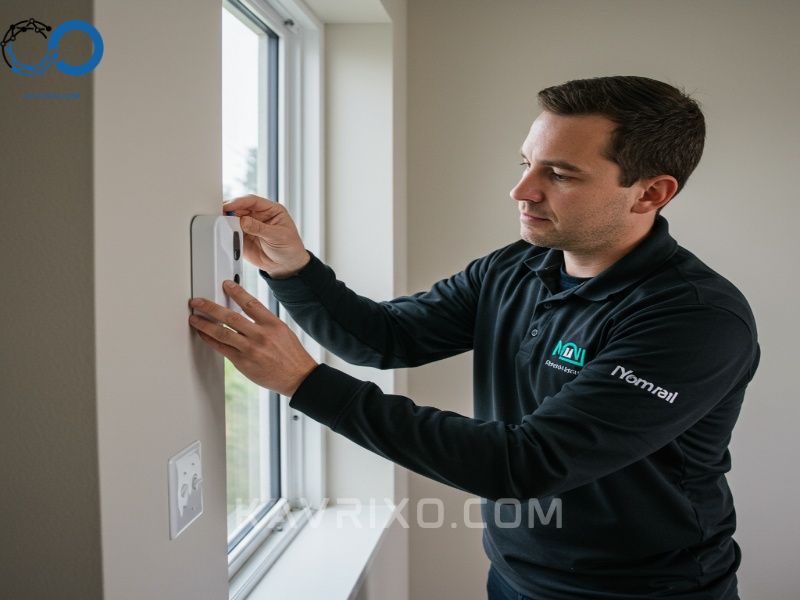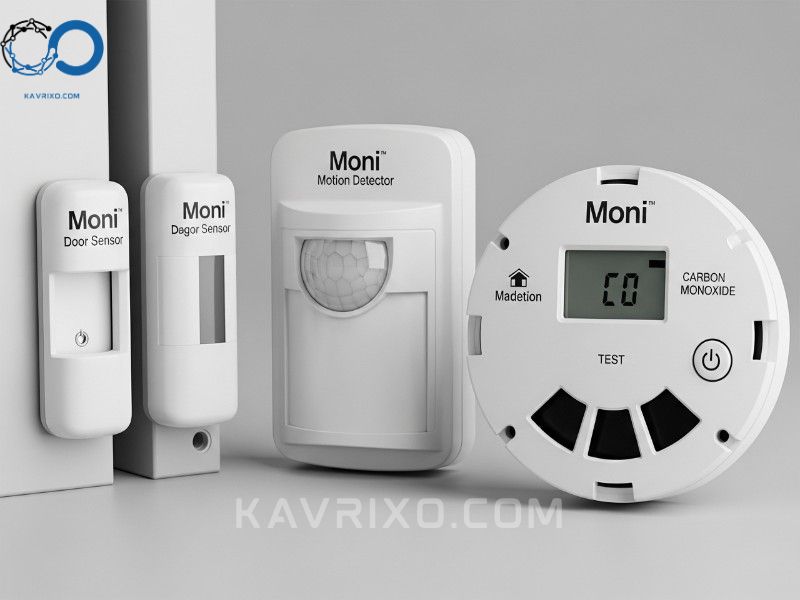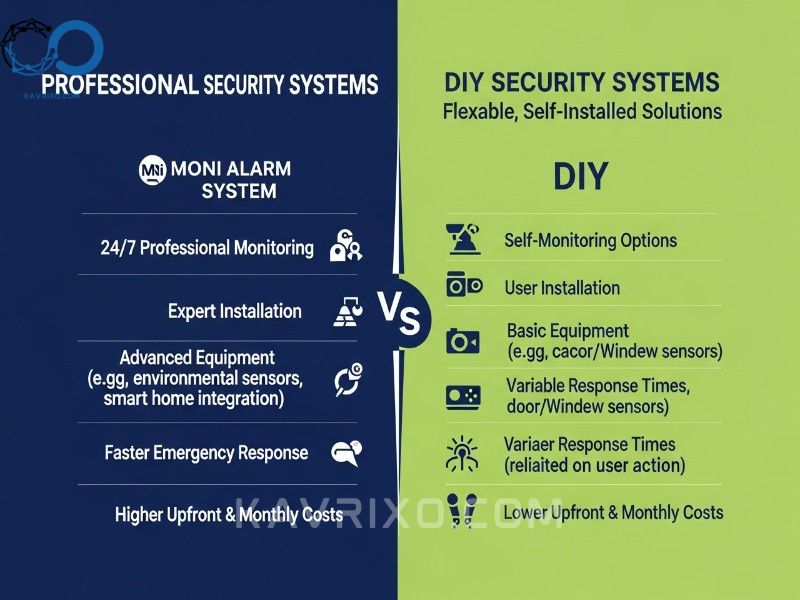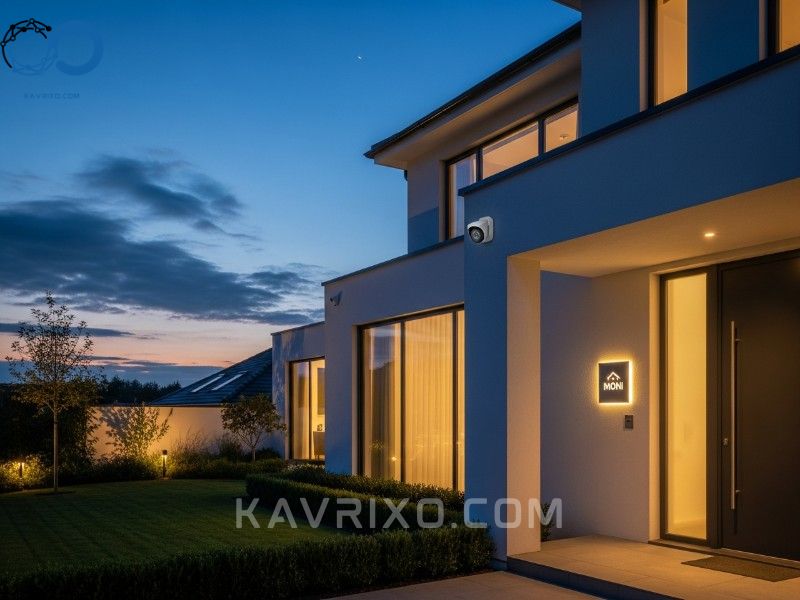Choosing a security provider for your home is one of the most critical decisions you will make regarding your family’s safety and peace of mind. For many years, one name stood out in the residential security landscape: Moni. While the brand name “Moni” itself may no longer be actively used for new customers, the legacy systems and the extensive network built by the company—formerly known as Monitronics—continue to protect countless homes across North America.
This comprehensive guide is designed to educate current Moni customers and those researching the history of leading security systems. We will delve deep into the technology that defined the moni home security experience, explore the critical features of the moni alarm system, trace the company’s history through significant rebrands, and explain what current users need to know about monitoring, maintenance, and future upgrades.
Contents
- 1 Understanding the Moni Brand Legacy: From Monitronics to Modern Security
- 2 Key Features of the Moni Home Security System
- 3 Installation, Monitoring, and Customer Service
- 4 Evaluating Moni System Components and Equipment
- 5 The Future: What Moni Customers Need to Know Post-Rebrand
- 6 Making the Right Choice for Your Home Safety
Understanding the Moni Brand Legacy: From Monitronics to Modern Security
To truly understand a Moni security system, one must first appreciate the company’s historical journey. The security industry is highly competitive and often sees large-scale mergers and acquisitions. Moni’s story is a prime example of this evolution, transitioning from a major dealer network to a consumer-facing brand, and finally, integrating into one of the largest names in the industry.
The Monitronics Era: Building a Dealer Network
The journey began decades ago with Monitronics International. Monitronics operated primarily as a wholesaler of security services, relying heavily on a vast network of independent authorized dealers to sell, install, and service their proprietary equipment. This model allowed Monitronics to quickly scale its operations and customer base nationwide. The focus was on providing reliable, centralized monitoring services to support these dealer-acquired customers. The systems deployed during this era were known for their robust, hardwired options, though they gradually evolved to incorporate wireless technology as well.
The Moni Transition: A Direct-to-Consumer Focus
In the mid-2010s, Monitronics underwent a significant shift, recognizing the need for a stronger, more direct relationship with the end consumer. This led to the rebranding efforts, culminating in the adoption of the shorter, consumer-friendly name: Moni. This transition was designed to modernize the brand image and compete more effectively with newer, tech-focused security startups. During this period, the moni home security offerings expanded, emphasizing smart home integration, touchscreen panels, and more sophisticated mobile app control. The goal was simple: provide cutting-edge technology backed by the trusted 24/7 monitoring infrastructure that Monitronics had perfected.
The Current Landscape: Integration and Rebranding with Brinks Home Security
Perhaps the most important element for current and prospective customers to understand is the final major transition. Following financial restructuring and strategic acquisitions, the Moni brand and its extensive customer base were integrated into the operations of Brinks Home Security. While the transition was gradual, today, nearly all services and accounts associated with the former Moni name are managed under the Brinks Home Security banner.
This integration means that while you may still have a physical Moni-branded panel or equipment, your professional monitoring, billing, and customer support are handled by Brinks Home Security. This seamless continuation of service is vital, ensuring that the reliability you expected from your moni alarm system remains intact, even under a new corporate umbrella. Understanding this history is crucial because any questions about service contracts, equipment warranties, or system upgrades must now be directed toward the current provider.

Key Features of the Moni Home Security System
Despite the name changes, the core technology and functionality that underpinned the robust moni alarm system remain highly relevant. Moni systems were designed for comprehensive security, offering redundancy, flexibility, and connectivity that catered to diverse residential needs.
24/7 Professional Monitoring: The Cornerstone of Reliability
The defining feature of any Moni system, regardless of the vintage of the equipment, was the commitment to professional, round-the-clock monitoring. This service ensures that when an alarm is triggered—whether by a forced entry sensor, a motion detector, or an environmental sensor—a trained professional at the monitoring center receives the signal immediately.
This monitoring center acts as the crucial liaison between the alarm event and emergency services. Protocols involve verifying the alarm (often via two-way voice communication through the panel) and, if necessary, dispatching police, fire, or medical responders quickly. The speed and efficiency of this process are paramount, and the monitoring centers utilized by Moni (and now Brinks Home Security) are typically U.L. Listed, ensuring they meet rigorous industry standards for response time and operational integrity.
Integrating Smart Home Devices and Home Automation
The later generations of moni home security systems were powerful hubs for smart home integration. These weren’t just simple alarms; they were platforms designed to manage lighting, locks, thermostats, and garage doors.
- Z-Wave and Wi-Fi Compatibility: Moni systems often utilized Z-Wave technology, the industry standard for low-power mesh networking in home automation. This allowed users to seamlessly add compatible smart devices, creating customized automation rules. For example, programming the system to automatically lock the doors and turn down the thermostat when the security system is armed.
- Remote Access via Mobile App: The ability to control the entire system remotely via a dedicated mobile application was a game-changer. Customers could check the status of their doors, view live video feeds, arm or disarm the alarm, and receive instant alerts directly to their smartphones, providing total control even when miles away from home.
Cellular Backup and Communication Redundancy
Reliability in a security system hinges on uninterrupted communication with the monitoring center. Older systems relied heavily on traditional landlines, which were vulnerable to being cut by intruders or disabled during power outages. Moni systems pivoted toward cellular communication as the primary method.
Cellular backup ensures that the alarm signal is transmitted securely and wirelessly over dedicated cellular networks (similar to a mobile phone). This provides a vital layer of redundancy. Even if the home loses electricity or the internet connection fails, the moni alarm system remains operational, powered by an internal battery backup, and connected to the monitoring center via the cellular module. This level of communication redundancy is essential for true security assurance.
Installation, Monitoring, and Customer Service
Understanding the service aspect of a security company is just as important as understanding the hardware. Moni’s model, being heavily based on authorized dealers and long-term contracts, established specific procedures for installation and service that still affect legacy customers today.
Professional Installation vs. DIY Options
Historically, Moni (Monitronics) systems were almost exclusively professionally installed. The complexity of integrating hardwired components, configuring the central panel, and ensuring optimal sensor placement required the expertise of trained technicians. This professional installation model offered several advantages:
- Guaranteed Functionality: Technicians ensure the system is installed correctly and communicating properly with the monitoring center from day one.
- Optimal Placement: Experts know the best locations for motion detectors and cameras to maximize coverage and minimize false alarms.
- Comprehensive Training: The installer provides hands-on training for the homeowner, ensuring they know how to use all features of the moni home security panel and mobile app.
While some modern iterations offered by the current provider might allow for DIY options for specific add-ons, the core Moni system remains a professionally installed product, ensuring a higher standard of setup and connectivity.

Contract Terms and Warranties
Security contracts are often the source of the most significant customer inquiries, and Moni systems were known for their long-term commitments. Standard contracts often spanned 36 to 60 months. This length of commitment was typical for professionally installed systems where the initial equipment cost was subsidized or rolled into the monthly monitoring fee.
Key aspects of legacy Moni contracts included:
- Monitoring Fees: Fixed monthly payments covering 24/7 monitoring and cellular communication.
- Equipment Warranty: Warranties typically covered defects in the equipment for a defined period, though service call fees might apply outside of specific coverage plans.
- Cancellation Policies: Cancellation outside of the contract term usually required payment of the remaining balance, a common industry practice designed to recoup the initial investment in the installed equipment.
It is crucial for existing customers to review their original contracts, as the terms and conditions agreed upon with Moni are generally upheld by the successor company, Brinks Home Security.
Assessing Customer Service Quality
Customer service quality is highly variable across the security industry, and Moni was no exception. As a large company managing millions of accounts, the reputation for customer service often hinged on the local dealer’s performance and the efficiency of the central call centers.
When evaluating the service for a moni alarm system today, focus on the current provider’s responsiveness:
- Technical Support: How quickly can technicians resolve issues related to communication failures or equipment faults?
- Billing and Contract Queries: Clarity and ease of communication regarding billing adjustments or contract renewals.
- False Alarm Management: Effective procedures for assisting homeowners in managing and reducing false alarms, which can lead to municipal fines if not handled correctly.
The reliability of the monitoring center itself—the speed of dispatch—is generally considered robust, but interaction with the administrative side of the business can sometimes be challenging, requiring patience and clear documentation of your system details.
Evaluating Moni System Components and Equipment
The physical components deployed by Moni were designed to be durable and interconnected, forming a comprehensive defense network. Understanding the specific hardware used helps homeowners maximize the system’s effectiveness and plan for future upgrades.
Control Panels: The Command Center
The heart of the moni home security system is the control panel. Over the years, Moni utilized several generations of panels, moving from basic keypads to sophisticated touchscreens.
- Legacy Panels (e.g., Simon XTi): These durable panels were highly reliable, featuring easy-to-read interfaces and built-in two-way voice communication, allowing users to speak directly to the monitoring center during an alarm event.
- Modern Touchscreen Panels: Later systems adopted sleek, high-definition touchscreen interfaces. These panels act as the central hub for home automation, providing visual feedback on all sensors, cameras, and smart devices, making the system far more intuitive for daily use. Features often included weather updates, internal chimes, and photo display capabilities.
Regardless of the panel type, they all house the critical components: the communication module (cellular or IP), the battery backup, and the system’s internal software, which manages all sensor data.
Sensor Variety: Comprehensive Protection
A great moni alarm system relies on a wide array of sensors to detect threats beyond simple door breaches. Moni systems typically included a layered approach to detection:
- Perimeter Protection (Door/Window Sensors): Magnetic contacts designed to trigger immediately when an entry point is opened.
- Interior Detection (Motion Detectors): Passive infrared (PIR) sensors detect heat and movement within a room. Many modern versions are pet-immune, allowing small animals to move freely without triggering a false alarm.
- Environmental Sensors: Crucial for detecting non-burglary threats, including smoke detectors, carbon monoxide (CO) detectors, and flood sensors (often placed near water heaters or in basements). These sensors are monitored 24/7, providing protection against silent killers and costly property damage.
- Glass Break Detectors: Acoustic sensors designed to recognize the specific sound frequency of breaking glass, providing an alert even before an intruder enters the protected space.

Video Surveillance Options
Video integration dramatically enhanced the capabilities of moni home security. Modern systems offered both indoor and outdoor cameras accessible via the mobile app.
- Live View and Recording: Cameras provide users with the ability to see what is happening in real-time and often include cloud storage for recording clips triggered by motion events.
- Remote Verification: Video feeds are invaluable for alarm verification. When an alarm is triggered, the homeowner or monitoring center can quickly check the associated video feed to confirm if the event is a genuine emergency or a false alarm, speeding up the response process.
- Doorbell Cameras: These specialized cameras integrate seamlessly, allowing two-way audio communication with visitors and providing alerts when packages are delivered or when motion is detected near the entrance.
The Future: What Moni Customers Need to Know Post-Rebrand
The most common question for existing users is: Does my old moni home security system still work, and what happens when I need service or want to upgrade? The short answer is that the system remains operational, but the service relationship is now managed entirely by the current entity that absorbed Moni’s assets.
Equipment Compatibility and Upgrades
Moni systems were built on reliable, often proprietary, hardware. While this ensures system integrity, it sometimes limits flexibility for upgrades compared to fully open-source smart home systems.
- Maintaining Existing Equipment: If your system is functioning well, you can generally continue your service without needing immediate equipment replacement. Routine maintenance, such as changing battery backups (usually every 3-5 years), is essential.
- Adding New Components: If you wish to expand your system (e.g., adding more cameras or smart locks), you will need to utilize components compatible with the current provider’s platform, which maintains support for the legacy Moni communication protocols. The transition allows customers to integrate newer, more advanced hardware while still utilizing their existing central panel.
- Required Panel Upgrades: In rare cases, very old panels relying on outdated cellular technology (like 3G or older) may require an upgrade to ensure continued communication, especially as cellular carriers phase out older networks. The current provider usually manages these mandatory upgrades proactively to maintain service continuity.

Maintaining Your Existing Moni Alarm System
Longevity and reliability depend heavily on proper maintenance. For a legacy moni alarm system, this includes:
- Regular Testing: Test your system monthly. Arm and disarm the system, trigger a sensor, and verify that the signal successfully reaches the monitoring center. If you have an environmental sensor, test the battery and functionality according to the manufacturer’s instructions.
- Battery Management: The panel’s main battery backup and individual sensor batteries must be replaced regularly. Failing batteries are the number one cause of system failures and false alarms.
- Software Updates: Ensure your panel’s software is up-to-date. Modern panels receive over-the-air updates that improve features, patch security vulnerabilities, and ensure compatibility with monitoring center protocols.
Understanding Monitoring Transfer Protocols
If you move residences, the process of transferring or canceling your service will depend heavily on your contract terms. Since the service is highly customized and professionally installed, transferring the service can sometimes be complex.
- Moving within Coverage Area: Often, the provider will offer a “mover’s package,” allowing you to take some portable equipment with you while installing a new system at your new address, often with a renewed contract.
- Leaving the Service: If you sell your home, the equipment is typically considered a fixture and remains with the property. The new homeowner may be offered an opportunity to take over the monitoring contract, or you may be required to fulfill the remainder of your obligation. Always contact the current provider well in advance of a move to understand your specific obligations and options.
Making the Right Choice for Your Home Safety
Deciding whether to stick with an existing moni home security system or switch to a new provider requires careful consideration of costs, technology, and long-term security goals.
Comparing Legacy Moni Systems to Modern Competitors
While the underlying technology of Moni systems is reliable, the security landscape has evolved rapidly. Modern competitors often emphasize flexibility, lower upfront costs (through DIY installation), and fully integrated proprietary smart ecosystems (like Google Nest or Ring).
| Feature | Legacy Moni System (via Brinks) | Modern Competitors (DIY/Flex) |
| Installation | Professional, high quality, required. | Often DIY, lower upfront cost. |
| Contract Length | Typically 36-60 months, mandatory. | Often month-to-month or annual. |
| Equipment Cost | Subsidized, rolled into monthly fee. | High upfront purchase cost. |
| Connectivity | Robust Cellular/IP (Redundant). | Primarily Wi-Fi, often with optional cellular backup. |
| Smart Integration | Z-Wave compatible, robust integration. | Specific proprietary ecosystem focus. |
For homeowners who value professional installation, guaranteed reliability, and deep, comprehensive monitoring, the service structure inherited from Moni remains highly competitive.

Cost Analysis of Moni Services
The cost of a Moni system primarily rests in the monthly monitoring fees, as the equipment has often been amortized over the initial contract period. When evaluating the cost, consider the total value received:
- 24/7 Professional Monitoring: The highest level of protection and dispatch response.
- Service and Warranty: Maintenance plans or service calls included in the monitoring fee (check your specific plan).
- Cellular Communication: The cost of the dedicated cellular connection is bundled into the service fee, ensuring redundancy.
While the monthly cost may be higher than some app-driven, self-monitored systems, the value proposition lies in the guaranteed professional intervention during an emergency.
Final Verdict on Moni Home Security Viability
Is a moni home security system still a viable choice for safety today? Absolutely. Although the brand name has evolved, the underlying infrastructure, the quality of the professionally installed equipment, and the reliability of the 24/7 monitoring centers remain top-tier.
For existing customers, continuing service under the current provider is often the most sensible and cost-effective choice, utilizing reliable equipment that is already fully integrated into the home. For new customers researching professional security, understanding the Moni legacy provides context for the robust, contract-based, professionally managed security services that are still offered today. Ultimately, the priority is peace of mind, and the foundation built by the Moni alarm system continues to deliver on that promise.

